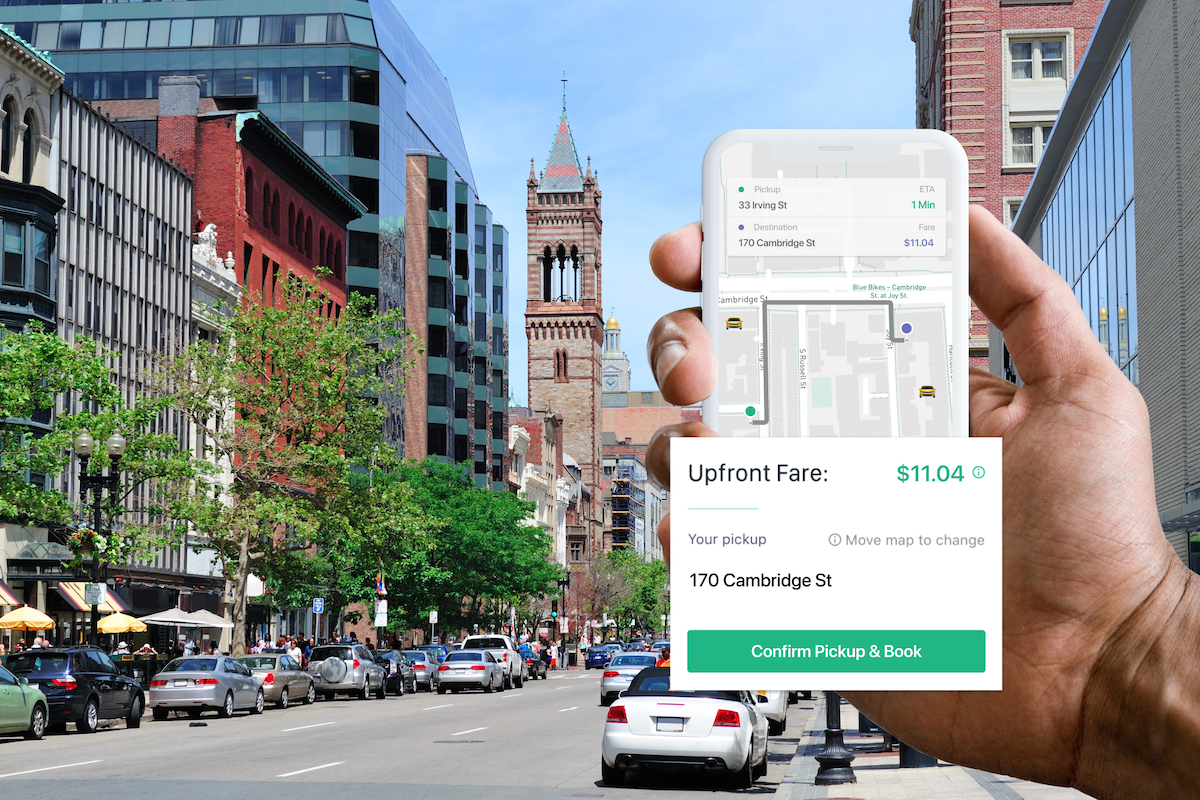Taxi hailing app Curb, which allows users to call for a ride through its mobile app, is introducing its transparent pricing feature in Philadelphia.
The app was founded in New York but has been around in Philly since 2017. It originally allowed for users to call a cab and pay for it through the app. But now, users will also see the price of their ride before agreeing, like popular ridesharing apps Lyft and Uber, VP of Mobile Jason Gross told Technical.ly.
It hadn’t done so thus far because of existing regulations set by the Philadelphia Parking Authority that required all taxi rides to use the taximeter to calculate fares, Gross said. But this May, Curb launched a pilot with the PPA to bring upfront pricing to the app as a way to bring traditional taxi services back into the fold after seeing declines with ridesharing services.
Both ridesharing apps and traditional taxis were hurt in the pandemic when folks had to stay home. Customers of Uber and Lyft — which had a hard-won fight to get here in 2014 and 2015 after operating in the city illegally for about three years — have acknowledged their prices are up and wait times are longer as the world has reopened.
“We’ve seen that, yes, they’ve subsidized the true cost of ride heavily,” Gross said of rideshare companies. “People have gotten used to it being often 50% cheaper than a taxi, and as people got comfortable with that, they assumed it was always cheaper. It’s since been turbo-charged by lack of availability, prices have gone up and have knocked so many people out of the market.”
Curb will soon be in all of Philadelphia’s approximately 1,500 taxis, and rides are not subject to surge pricing, Gross said. The fare is based on the distance of the trip and the time it takes to get there.
So, a three-mile trip should cost you roughly the same no matter the time of day, so long as you don’t get stuck in rush hour traffic. It leans closer to flat fare pricing for standard trips; if you’re heading from Center City to the airport a few times a month, you’ll be paying a really similar fare each time. The famous New Year’s Eve surge pricing doesn’t apply.
“There’s no sticker shock. We don’t plan to implement surge pricing, even during high demand,” Gross said. “We really want to offer predictability and trust.”
The taxi drivers themselves should also get a better sense of transparency, as they, too, see the trip’s destination and cost before accepting the ride. Curb outfits all taxis with the hardware and software needed to accept rides. And in cities where the transparent pricing isn’t approved by the local municipality, Curb can still be used to pay for a ride.
As the year progresses, Curb is planning to launch its upfront pricing in more metro areas, and CEO Amos Tamam said it’s helping consumers “rediscover taxis.”
“Upfront pricing has been an integral part of our strategy as we seek to offer riders the seamless experience they have come to expect, as well as help drivers stay afloat during a difficult time,” Tamam said in a statement. “We look forward to expanding upfront pricing in more cities and finding new ways to improve the taxi experience.”
Before you go...
Please consider supporting Technical.ly to keep our independent journalism strong. Unlike most business-focused media outlets, we don’t have a paywall. Instead, we count on your personal and organizational support.
Join our growing Slack community
Join 5,000 tech professionals and entrepreneurs in our community Slack today!




